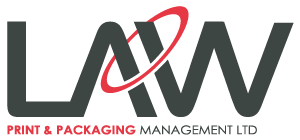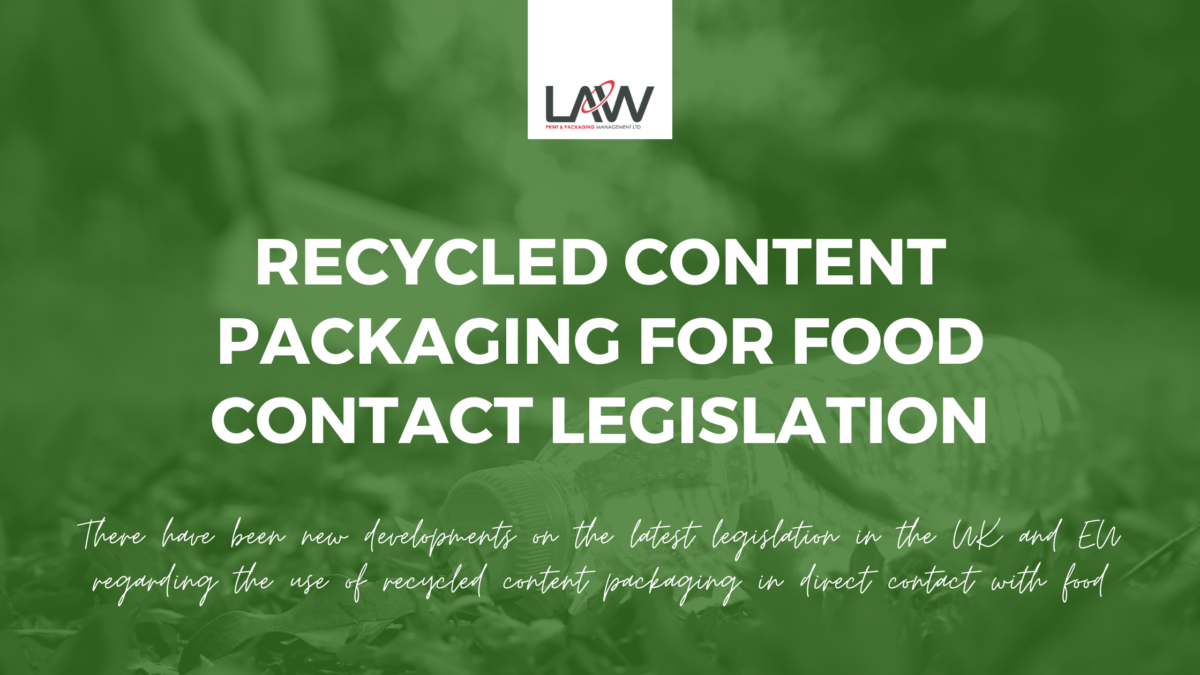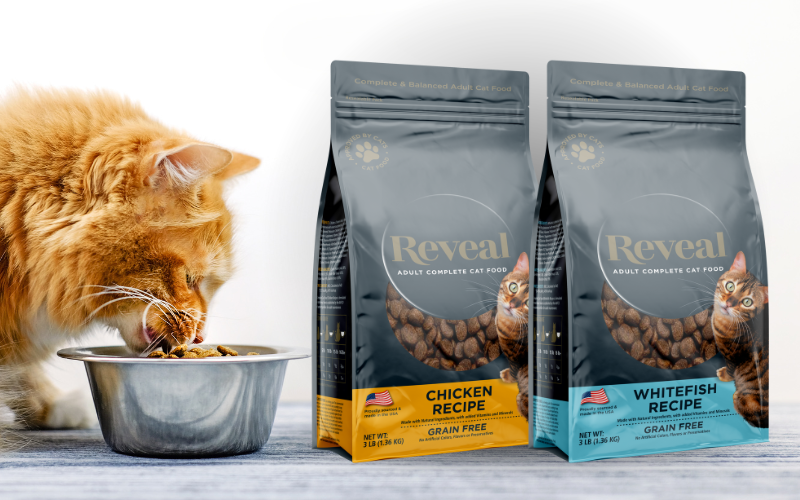Our breadth of packaging knowledge is growing and expanding with every new piece of information coming to light, whether that be from new technology entering the stage, or whether it is from new legislation.
This blog outlines some terminology used to describe the material used in multilayer packaging with a percentage of recycled material and will also touch upon recycled content packaging for food contact legislation.
Recycled material utilised in packaging typically comes from two potential sources; this material is defined as follows: PIR is an abbreviation for Post Industrial Resin, which is the raw material made from waste generated within the manufacturing industry, normally waste generated during the processing and production of packaging products. PCR is an abbreviation for Post Consumer Resin and is the raw material made from waste generated by the consumer/end user.
PIR and PCR- content based packaging can both be recycled again and again regardless of the percentage of recycled content, but of course, these items won’t be defined as virgin materials, depending on the process used to regenerate, the material will define its quality and applications.
There are two main methods for recycling plastics which are known as the Mechanical and the Chemical method. The mechanical method is crude in that it simply involves washing, chopping and flaking before being extruded into another product. Plastic films and products produced this way will lose some clarity characteristics (clear films will be hazy).
Alternatively, Chemical reprocessing, also known as Pyrolysis, breaks the material down into its constituent parts and you are left with materials that are suitable to be reprocessed into very high-quality plastic packaging material. The chemical process can be carried out an infinite number of times and indicates a clear path for plastics to be regarded as totally reusable and have a high value as waste in the future. Other natural forms of packaging have a limited lifespan as the recycling process degrades the quality and therefore its uses.
What are the uses for Post Industrial Recycled (PIR) Plastics?
Post Industrial Recycled (PIR) Packaging is available made from resins produced from both of the above recycling methods we can supply either to our customers. This is a more closed-loop system where manufacturing facilities collect scraps of a particular product, like flexible packaging waste and trim material, created during the manufacturing process, and then reuse them.
There have been new developments on the latest legislation in the UK and EU regarding the use of recycled content packaging in direct contact with food, in particular, PCR (Post Consumer Resin) materials:
Why should I choose PIR or PCR instead of Virgin Plastics?
Both material sources have clear benefits to the environment in that they reduce the amounts of waste generated in the environment and they both reduce the consumption of the Earth’s valuable resources. The decision on whether to use PIR or PCR should also take into account the method used to produce the resins.
Mechanical recycling of post-consumer plastic waste will result in a material that has a limited number of applications due to the rather crude method used; the resultant resins are not suitable for direct contact with food or any applications within the healthcare or pharmaceutical industry.
Resins derived from chemical recycling though have a much wider spectrum of applications because the waste material is taken back to its constituent parts before being reformed as a polymer resin. The result is indistinguishable from virgin plastic resins, indeed the difference is so small that it presents problems within the industry to prove that it is there at all when combined with virgin material.
In conclusion, both processes reduce the demand for virgin material, however, both processes produce materials that are quite different and have different applications. We cannot cover this topic in great depth in such a short blog, so please contact us or your account manager to find out what’s going to be best for you and your products.
What are the Regulations?
Commission Regulation (EU) No 10/2011 of 14 January 2011 on plastic materials and articles intended to come into contact with food.
The principle underlying this Regulation is that any material or article intended to come into contact directly or indirectly with food must be sufficiently inert to preclude substances from being transferred to food in quantities large enough to endanger human health or to bring about an unacceptable change in the composition of the food or a deterioration in its organoleptic properties.
The European Commission announced a draft act that will update the EU legislative framework to simplify the processes around the development, certification and use of recycled plastic FCMs (Food Contact Materials).
The draft regulation was open for public comment until January 10, 2022, and intended to be published in the first quarter of 2022: https://ec.europa.eu/info/law/better-regulation/have-your-say/initiatives/12013-Food-safety-recycled-plastic-in-food-packaging-updated-rules-_en
Problems of Recycling Food Contact Plastics
A circular economy only works if the products that are created using recycled materials are safe and regulatory compliant. The FCM industry faces several issues regarding the use of recycled materials in the creation of new products. In part, this stems from the fact that the development of new plastics has outpaced new recycling technologies.
Depending on the collection type and recycling technology, the recycled plastics used for FCM will contain a variety of different plastic types. Currently, it is impossible to identify the plastic in each article without individual analysis. Without this oversight, it is possible that FCM made from recycled materials would fail to comply with EU regulations, such as Commission Regulation 10/2011 – Plastics, Materials and Articles in Contact with Food.
We need to highlight that the legislation is not indicating that the use of PCR over PIR is recommended. If you need more information on PIR packaging or would like to submit a quote request for this type of packaging, please contact us.
This will help to avoid costly mistakes down the line. For more information on PIR/PCR Plastics, please don’t hesitate to give us a call or send an email.


